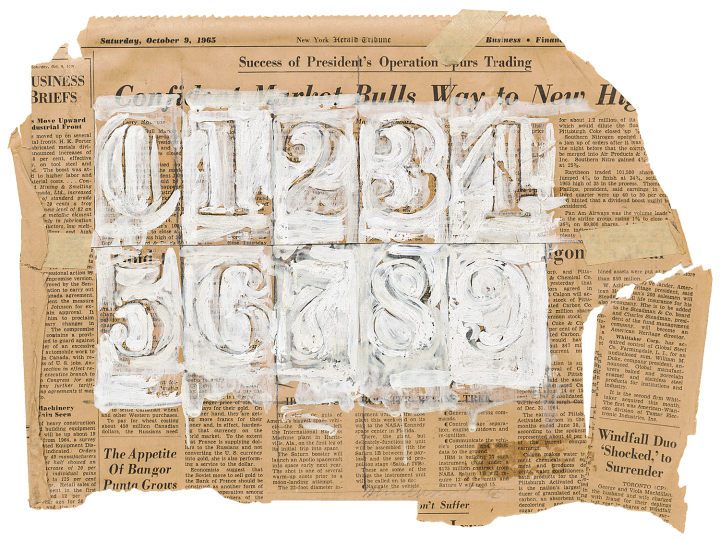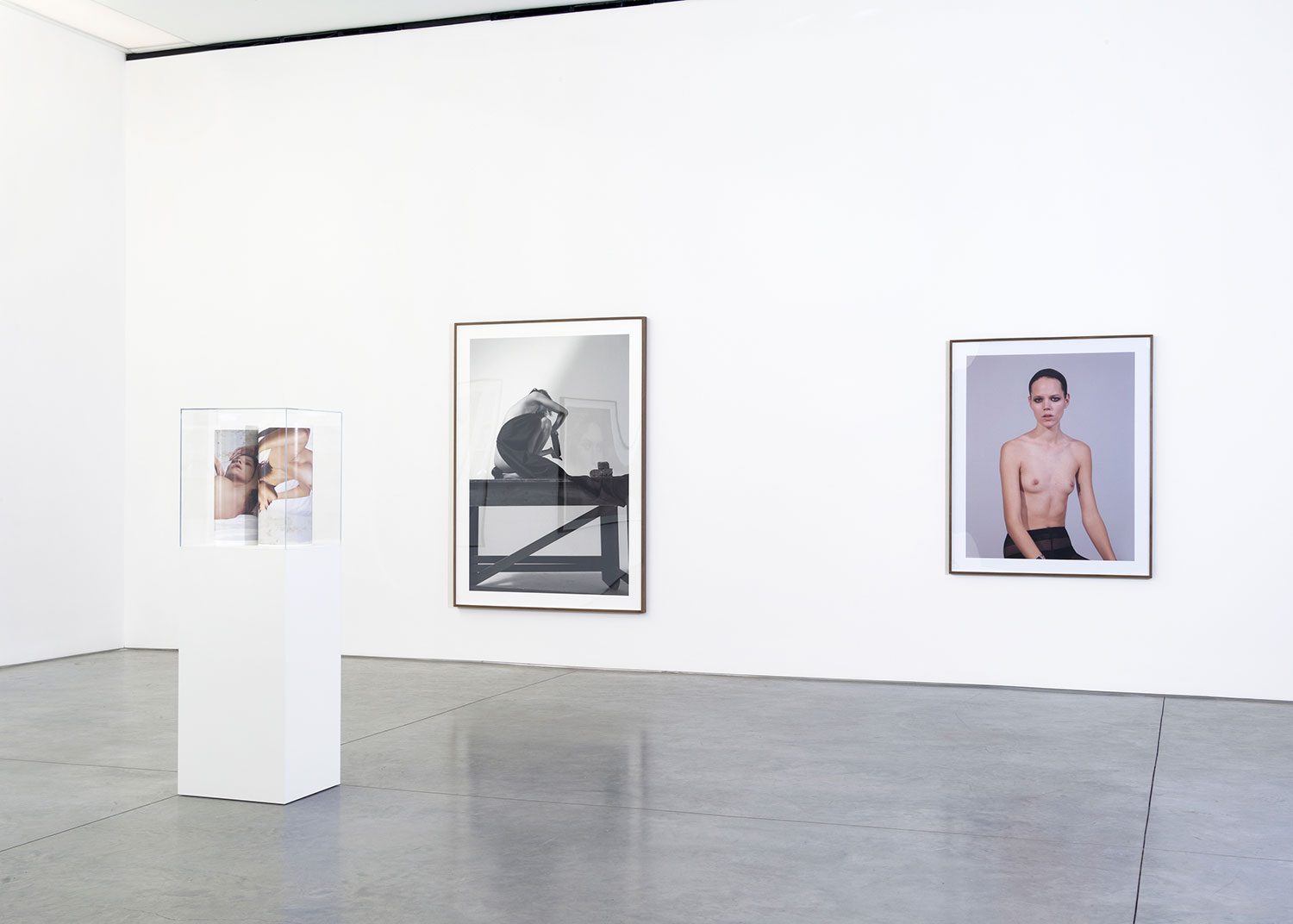
From Flash Art International no. 143, 1988
Leo Castelli: Let’s pinpoint not my vague awareness of your existence or the fact that we had common friends of great caliber, but when, precisely, was the moment when I really saw your work and when I got interested in what you were doing. Now appropriation, as they call it, is very fashionable. At that time it wasn’t. Let’s see how I was struck by the fact that here was somebody who was doing, or re-doing in her own way, the work of important people like Johns, Rauschenberg, Warhol, Lichtenstein…
Elaine Sturtevant: …Stella…
LC: …Oldenburg, and why?
Dan Cameron: That’s something that interests me too.
LC: Why did she do it? How did this idea occur to her? At the time it was an incredibly original idea. It was quite amazing, although now you are used to it. At the time when she appeared we were also used to the fact that artists like Marcel Duchamp, for instance, did very extravagant things. I think that some of this spirit was communicated, God knows how, to our friend who sits here, and that she then proceeded to try to do paintings by Johns, or others. I think it was as faithfully as you could do it?
ES: Yes, as close as I could. As exact as possible.
LC: So that, if you didn’t know, if you looked at them as close as possible, that this was a work by Oldenburg or Jasper Johns or Andy Warhol.
ES: Yes.
DC: The scale was identical.
LC: Now, one thing that struck me there was that she succeeded better in doing the things that were more difficult. You couldn’t quite get the spirit of Lichtenstein as you did with the much more difficult spirit of Johns.
ES: Well, you have the question now of imposing energy into something which is so readily transformed. You see now, Lichtenstein is so structured and so graphic in terms of re-doing it. To impose that energy into it is more difficult than when you are working with a more difficult technique.
LC: So anyway, I remember this very clearly, and I wanted on this occasion to state this fact after so many years. So what else can you say? I own a work of yours which is constantly under my eyes. It is the fried egg of Oldenburg’s.
ES: In the frying pan. I think maybe that was the first time you actually encountered a whole body of my work, when I did The Store with Claes Oldenburg. You came down, and you bought something. You chose the egg and the frying pan.
LC: I saw that there was a difference between yours and his.
ES: There is indeed.
LC: I recognized it. So anyway, you did what you did and you tried to reproduce the thing as best as you could.
ES: Not as best as I could because that implies something different — as closely as I could without copying it. When you copy something it becomes something else.

DC: I think Duchamp is a good place to start because Duchamp used the example of the Cubists in Paris partly as inspiration, but then his work was a reaction against that. Now, I think of your work as being inspired by the Pop generation, but in a way you were also trying to make further statements…
ES: I think that’s very accurate. There were many factors: Duchamp was of course experiencing tremendous popularity at that time. There were many younger artists who were in great admiration of his work, whereas previously, Duchamp was a background figure, I’m talking in the broader sense…
DC: One of the many Cubists…
ES: Yes, and I think that certainly his concern with trying to redefine what we consider art was a very big factor in terms of my own work. But there is also the factor of if you go back before the Pop artists, you have the abstract expressionists, who were obsessed with the idea of creating a new imagery, and it was really an obsession to create something new. And then when you had the Pop artists, and they came up with incredibly startling, forthright, dynamic imagery, it was a further step in that direction, but it was still concerned with imagery. That seemed to me rather flat, because it’s limiting if you are only involved with creating an image.
DC: I can think of one artist, Gretchen Bender, who appropriates artists of this moment. In that way, she’s somewhat similar to what you are doing.
ES: Well that came about because in order for the work to function, you had to recognize the work immediately. This is why I would use the same size, the same scale, the same materials, because with the initial viewing of that work, you had to know it was a Johns by Sturtevant. There could be no confusion in your mind that maybe it was someone else, or a de Kooning. You had to know who that particular artist was. So of course you’d take these fantastic painters who had very strong images, and they’d function for me.
LC: There is one point that I want to make here. Weren’t you anxious when you were doing this about how your subject would react? Weren’t you afraid that they would be very, very angry, even mad at you?
ES: That certainly was a factor. It was kind of terrifying work to do.
LC: I can imagine that.
ES: My first Warhol was a flower, and Andy was aware of my work and gave me the silkscreens, so that was already known. Johns or Rauschenberg, who did not know what I was doing — I kind of operated on the premise that you knew what you were doing, and you knew you were right, and you understood what you were doing, so that it would be eventually comprehended by them. Although, you got various reactions. Dan and I were talking about Claes Oldenburg who was one of my biggest supporters and who theoretically understood the work. Then I did his Store, and he became enraged.

DC: Because it was different when it was his own work. He felt that attachment.
ES: But you know, when you have a theoretical and intellectual understanding of something, it’s interesting how powerful the emotions can be. He just totally wiped out the idea because the reaction was that strong. In most cases the artists understood intuitively what I was doing and felt strongly that it was right.
LC: But anyway — to come back to the beginning — you did something that was very new and very original. Nobody had done it before, but now it is being done in various ways. Some artists come to mind that perhaps do the thing that you didn’t do. They just copy their subjects. Somebody called Bidlo — when you are in front of a Pollock done by Bidlo, you really are fooled, you think it’s a Pollock. That’s something a bit different. Is it copying? He does it so well, it goes beyond copying.
ES: Yes, that’s a possibility.
LC: Then another one who did something quite amazing, also incredibly well, that went beyond the original artist’s work, though not because of Pollock in this artist’s case, is Philip Taaffe, when he did those paintings of Bridget Riley. What he did was obviously inspired by her work, but I should say that Bridget Riley never did paintings that looked as good as his.
DC: Exactly, they looked the same but they felt completely different.
ES: That sometimes happens to me. People will say that a work looks better than the original. Then I say, that’s totally wrong, its not supposed to be better. Believe me, that’s way off the mark.
LC: Well I don’t think Philip Taaffe wanted to do paintings that were better than Bridget Riley. He just thought that he had found something that was an interesting approach to doing not exactly trompe l’oeil — the great master of this was Vasarely.
DC: Are you still working with contemporary figures?
ES: I never like to talk about what I am currently doing. There are many reasons, but mainly I feel that if you talk about it, you take away a lot of the energy.

DC: I do want to get on to the idea that appropriation is perhaps in many ways an extension of Pop. A lot of appropriation artists actually had their beginnings in conceptual art, but they acknowledge that Pop was their biggest influence. I know both Mike Bidlo and Sherrie Levine have talked about Warhol and the immense influence his work had on them. I think that what you are doing, and what you were doing in the 1960s, has something to do with Pop.
ES: Definitely.
DC: Can you talk about that relationship?
ES: I think it has to do with the concern for imagery. And that enormous feeling that you had to somehow manipulate a painting, or in terms of Stella, to manipulate what a canvas was, what shape a canvas could be. Those are all the steps to changing our idea of what is beautiful and what is art. With the stronger artists, like Lichtenstein, Warhol or Rosenquist, who were so bold and so clear, it was immediately visually consumed. You didn’t have to ponder, you didn’t have to talk about painting techniques. It was just there and it could be consumed almost immediately. But it did have the same involvement with the object or with the content of the imagery. I found that a little dull. I don’t mean dull in the sense of boring, I mean there had to be a wider place to go than either the concern with manipulating the stretcher or changing the concept or the idea of what was beautiful. It seemed to me to be limiting. There are a hundred million ways you can do that.
DC: You were describing how Pop seemed concerned with the image and you were going to connect it to your interest in the image.
ES: Prior to Pop art the abstract expressionists were obsessed with imagery. Then you had Pop art, which came through with this fantastic, bold, immediately visible imagery. Then you had people like Stella who were taking canvases and putting them in different forms. I wanted to paint in ways that involved different images and issues.
DC: Those issues being?
ES: Those issues being in terms of the total structure of painting as we know it. For instance, if you are only involved with imagery, this means that the structure of aesthetics is totally stagnant. That is impossible in view of the fact that there are all those theoretical sources which have developed tremendously, so aesthetics themselves had to be changing too. To find a way to use an object that would not present itself as an object, that would at the same time talk about the structure of aesthetics as the idea — that was what I was going for.





